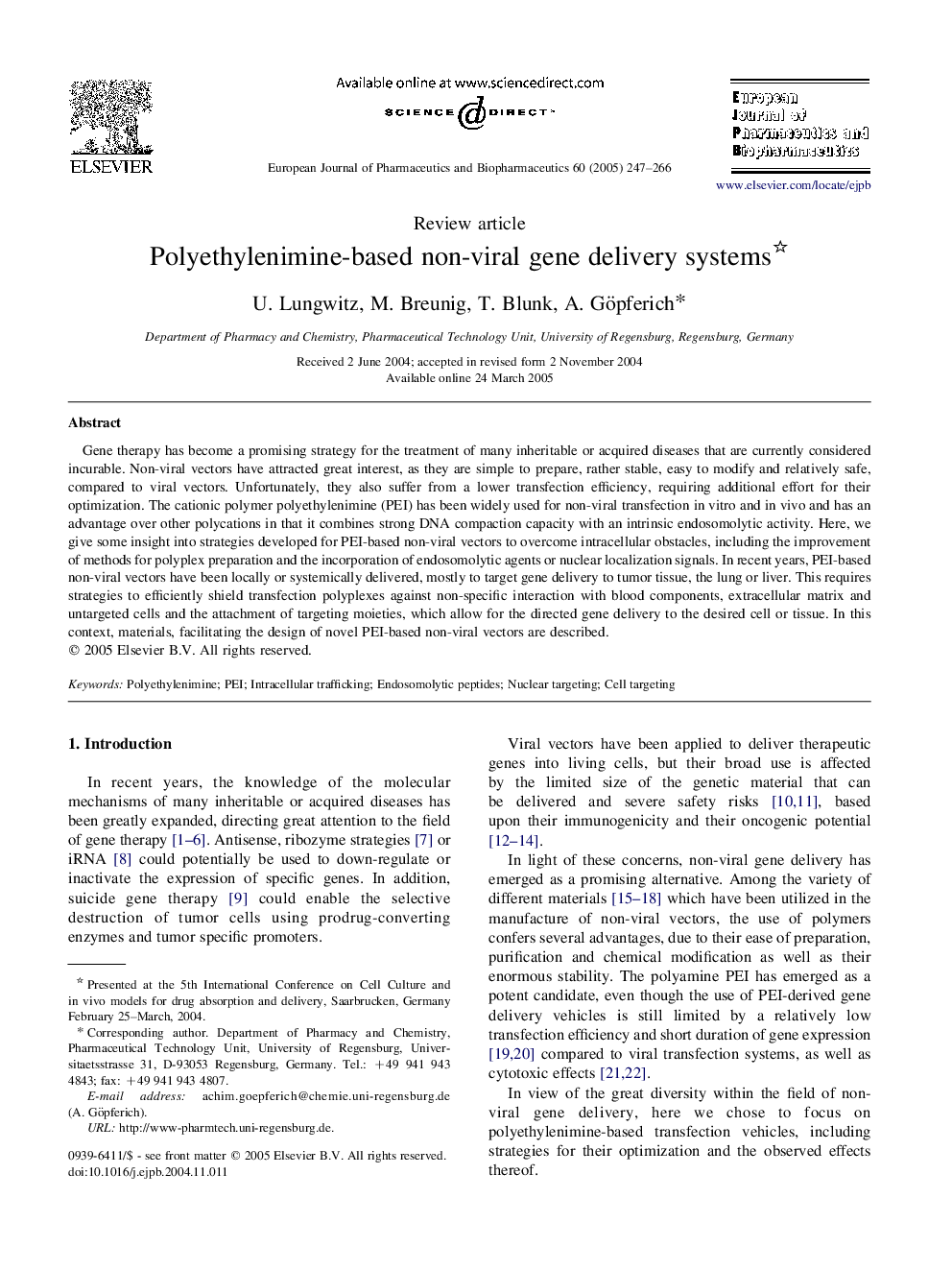| Article ID | Journal | Published Year | Pages | File Type |
|---|---|---|---|---|
| 9901466 | European Journal of Pharmaceutics and Biopharmaceutics | 2005 | 20 Pages |
Abstract
Gene therapy has become a promising strategy for the treatment of many inheritable or acquired diseases that are currently considered incurable. Non-viral vectors have attracted great interest, as they are simple to prepare, rather stable, easy to modify and relatively safe, compared to viral vectors. Unfortunately, they also suffer from a lower transfection efficiency, requiring additional effort for their optimization. The cationic polymer polyethylenimine (PEI) has been widely used for non-viral transfection in vitro and in vivo and has an advantage over other polycations in that it combines strong DNA compaction capacity with an intrinsic endosomolytic activity. Here, we give some insight into strategies developed for PEI-based non-viral vectors to overcome intracellular obstacles, including the improvement of methods for polyplex preparation and the incorporation of endosomolytic agents or nuclear localization signals. In recent years, PEI-based non-viral vectors have been locally or systemically delivered, mostly to target gene delivery to tumor tissue, the lung or liver. This requires strategies to efficiently shield transfection polyplexes against non-specific interaction with blood components, extracellular matrix and untargeted cells and the attachment of targeting moieties, which allow for the directed gene delivery to the desired cell or tissue. In this context, materials, facilitating the design of novel PEI-based non-viral vectors are described.
Related Topics
Life Sciences
Biochemistry, Genetics and Molecular Biology
Biotechnology
Authors
U. Lungwitz, M. Breunig, T. Blunk, A. Göpferich,
